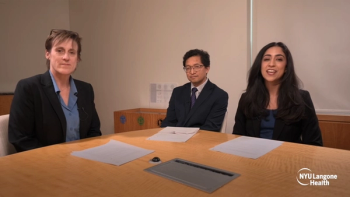
Device yields real-time analysis
An intraoperative wavefront aberrometer seems to be highly beneficial for patients and surgeons because it allows the surgeon to manage astigmatism effectively.
Cincinnati-An intraoperative wavefront aberrometer (ORange, WaveTec Vision) seems to be highly beneficial for patients and surgeons because it allows the surgeon to manage astigmatism effectively intraoperatively, according to Edward Holland, MD. The instrument facilitates real-time analysis of residual cylinder after the creation of limbal relaxing incisions (LRIs).
The visual outcomes with this aberrometer were significantly better when compared with the visual outcomes after creation of LRIs when the aberrometer was not used, he said.
Efficacy level
Since creation of LRIs is one of the most common ways to manage astigmatism in this patient population and the use is increasing, Dr. Holland said he wanted to measure the effect of the treatment intraoperatively to determine the efficacy level of the aberrometer. Despite the availability of a nomogram to guide surgeons in determining the length, depth, and number of incisions, the treatment is not foolproof.
"There is no way to know whether the incisions are 100% effective when they are created," Dr. Holland said. "Surgeons cannot be absolutely accurate with the incision depth, length, and tissue response."
This aberrometer, he said, "measures the optical system intraoperatively in real time to help guide surgeons in treatment on the spot. We wanted to determine the effectiveness of using [this] system for LRIs."
Dr. Holland and his colleagues conducted a multicenter prospective study of the system that included 283 patients who underwent cataract surgery at the first 10 sites at which the device was available in the United States.
Of the 283 patients, 94 patients were available for a 1-month, follow-up examination. The device was used at all sites to measure the impact of LRIs intraoperatively, and enhancements were done as necessary by lengthening or deepening the incisions to address significant intraoperative residual astigmatism. The study data were compared with historical LRI outcomes data at each study site obtained during surgeries in which the system was not used. Data from 189 patients were available from the 1-month follow-up examination.
Dr. Holland said that using the device, the surgeons acted on the data and enhanced the LRIs in 39% of the cases. The mean preoperative cylinder in the group in which the system was not used was 1.47 D and the mean 15- to 30-day cylinder was 0.70 D; in contrast, the mean preoperative cylinder in the group of patients in which the system was used was 1.45 D, with a mean of 0.47 D of astigmatism at the 1-month examination, a decrease of 35%.
Reduced outliers
Dr. Holland demonstrated on a vector plot that the system significantly reduced outliers. The results showed that 100% of eyes were within 1.50 D of cylinder at 30 days compared with only 92% before use of the system. In addition, almost 20% more eyes treated with the system were within 0.50 D of cylinder 30 days after surgery compared with the group in which the system was not used.
In addition to the 35% reduction in the residual astigmatism, the range and the standard deviation also decreased, he said.
"The [aberrometer] provides refractive-cataract surgeons with real-time analysis of residual cylinder following creation of LRIs," Dr. Holland concluded. "The outcomes . . . were significantly better when compared [with] LRIs created without [device] guidance. The use of this system can reduce refractive surprises following surgery."
Newsletter
Don’t miss out—get Ophthalmology Times updates on the latest clinical advancements and expert interviews, straight to your inbox.













































